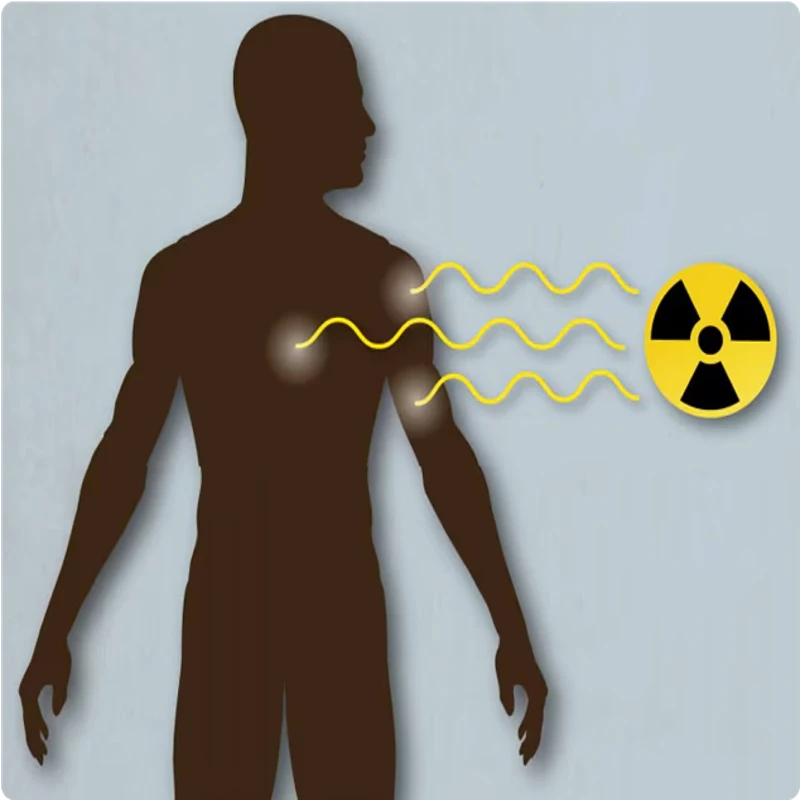Radiation monitoring is a critical aspect of hiking safety equipment, especially during extended outdoor expeditions. While rare, the presence of radioactive hotspots can pose a serious health risk in certain wilderness areas. From radon-emitting caves to remnants of industrial or military activities, understanding these risks and tracking radiation levels is essential for safety. In this guide, we’ll explore how advanced tools like portable radiation detectors and thoughtful planning can help ensure safe and informed adventures.
Understanding Radiation Risks in the Wilderness
Sources of Radiation in Natural and Human-Made Environments
Radiation exposure in the wild can stem from both natural and human-made sources. Natural sources include cosmic rays, radon gas, and uranium-rich soil, commonly found in mountainous or desert areas. These sources contribute to background radiation, which, though generally low, can accumulate over time during prolonged exposure.
Man-made sources, such as fallout from nuclear testing or waste from abandoned industrial sites, are less predictable. These locations may present significant risks, requiring proper radioactive exposure measurement to ensure safety.
Health Hazards of Prolonged Exposure
Extended exposure to radiation, even at low levels, can lead to long-term health effects. These include cellular damage and increased risks of conditions such as cancer. Recognizing these hazards highlights the importance of measuring radiation exposure during outdoor expeditions to mitigate risks effectively.
Essential Tools for Radiation Monitoring
Geiger Counters: A Primary Defense
A Geiger counter’s efficiency makes it indispensable for detecting and quantifying radiation. Modern models are lightweight, durable, and specifically designed for rugged environments, ensuring they’re ideal expedition safety equipment. Portable Geiger counters provide real-time readings, enabling hikers to identify high-radiation zones and make informed decisions quickly.
Cumulative Dose Monitoring Devices
For extended trips, cumulative dose monitoring devices are critical. These tools track total radiation exposure over time, offering a comprehensive overview of accumulated risks. Paired with Geiger counters, they enhance real-time safety monitoring to ensure that exposure limits remain within acceptable thresholds.
Complementary Personal Safety Gadgets
Additional personal safety gadgets like radiation badges and shielding blankets provide further layers of protection. These tools are lightweight and easy to integrate into your hiking safety equipment, making them a valuable part of any expedition.
Preparing for a Radiation-Safe Expedition
Research and Risk Assessment
Preparation begins with research. Use radiation maps and reports to identify potential hotspots along your route. Consult environmental monitoring data to ensure you’re aware of areas with elevated risks, allowing you to plan accordingly.
Packing the Right Gear
A well-prepared adventurer includes field radiation testing tools like Geiger counters and cumulative dose monitors in their gear. Add shielding materials, first-aid kits, and communication devices to enhance overall safety.
Training and Calibration
Before heading out, ensure you are familiar with operating your portable radiation detectors. Practice interpreting readings and performing tests on air, soil, and water. Regular calibration ensures that your devices provide accurate data in the field.
Strategies for Tracking and Managing Exposure
Using Geiger Counters in the Field
When exploring, use your Geiger counter to test new areas and assess air, soil, and water for potential contamination. Frequent readings are essential in high-risk zones to avoid unnecessary exposure.
Maintaining Detailed Data Logs
Documenting your radiation readings is crucial for tracking trends and identifying high-risk areas. These logs can also serve as valuable references for refining future safety strategies and sharing findings with relevant authorities.
Field Protocols for Radiation Protection
Adopt protocols based on time, distance, and shielding to minimize exposure. Limit time spent in higher-radiation zones, maintain safe distances, and use shielding materials as needed. These simple yet effective measures are essential wilderness safety tips for extended expeditions.
Enhancing Safety During Expeditions
Risk Management Plans
Develop a clear risk management plan, including emergency procedures for elevated radiation levels. Identify evacuation routes and establish communication protocols with your team to respond effectively to hazards.
Avoiding Contamination
Follow wilderness safety tips to avoid contaminated food, water, or objects. Always test these sources with your Geiger counter or other tools before use, and avoid collecting items from high-radiation areas.
Leveraging Real-Time Monitoring
Advanced tools for real-time safety monitoring offer immediate alerts to changing radiation levels. These devices ensure you can take quick action to protect yourself and your team, enhancing overall expedition safety.
Post-Expedition Actions
Medical Evaluation
After your expedition, consult medical professionals to assess any potential radiation exposure. A thorough evaluation ensures peace of mind and addresses any lingering health concerns.
Reviewing Data Logs
Analyze your documented radiation readings to refine future strategies. Sharing this data with environmental organizations or authorities can contribute to broader safety initiatives.
Preparing for Future Expeditions
Use your experience to enhance your gear and protocols for future trips. A commitment to continuous learning ensures that you’re always equipped to handle the challenges of radiation tracking in the wilderness.
Conclusion
Monitoring radiation exposure during extended outdoor expeditions is essential for both safety and peace of mind. By leveraging tools like Geiger counters, cumulative dose monitors, and personal safety gadgets, you can protect yourself from potential risks while exploring the wild. With proper preparation, advanced technology, and adherence to best practices, you can confidently enjoy your adventures while ensuring your safety.



Commenta
Questo sito è protetto da hCaptcha e applica le Norme sulla privacy e i Termini di servizio di hCaptcha.